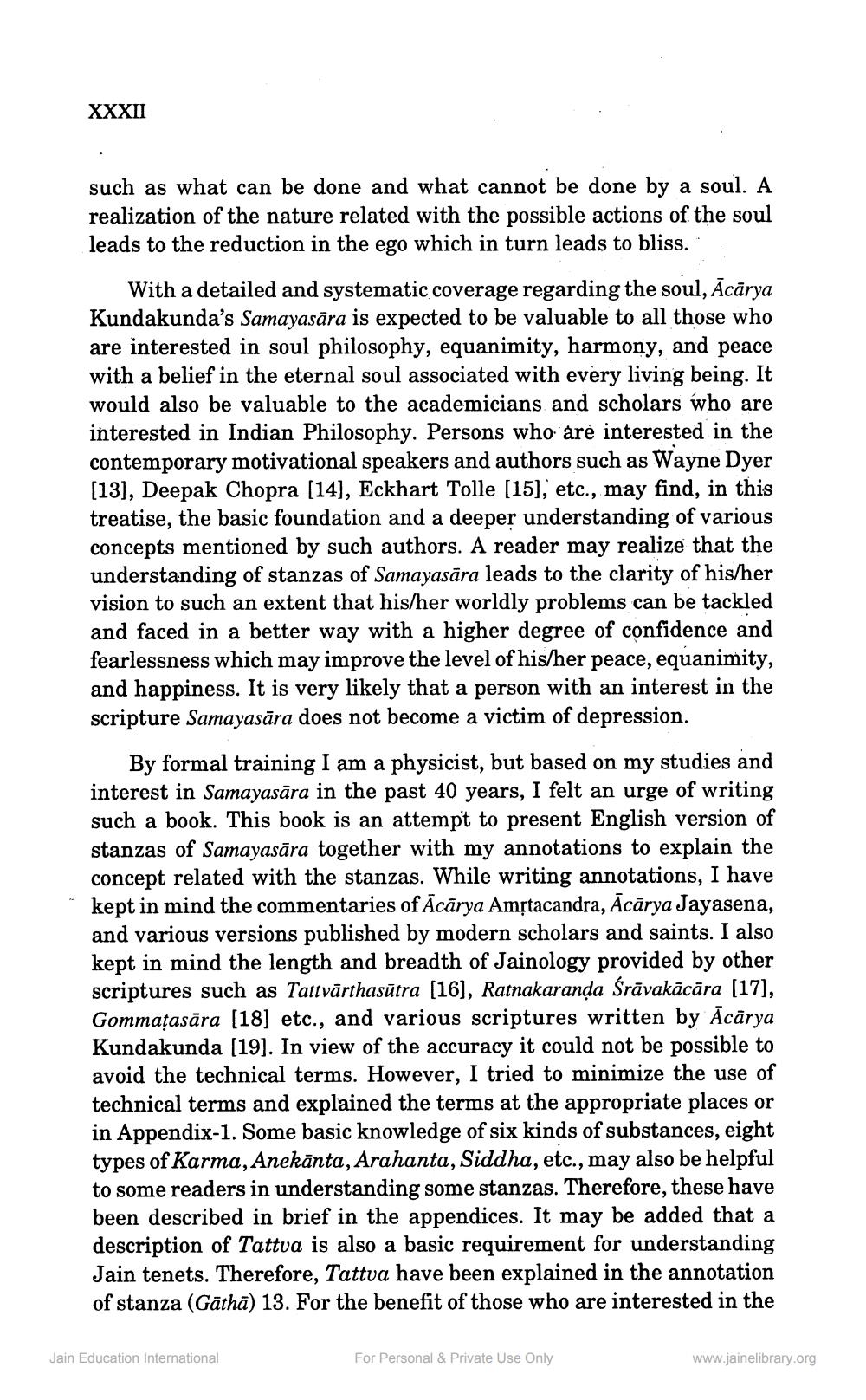________________
XXXII
such as what can be done and what cannot be done by a soul. A realization of the nature related with the possible actions of the soul leads to the reduction in the ego which in turn leads to bliss.
With a detailed and systematic coverage regarding the soul, Ācārya Kundakunda's Samayasāra is expected to be valuable to all those who are interested in soul philosophy, equanimity, harmony, and peace with a belief in the eternal soul associated with every living being. It would also be valuable to the academicians and scholars who are interested in Indian Philosophy. Persons who are interested in the contemporary motivational speakers and authors such as Wayne Dyer (13), Deepak Chopra (14), Eckhart Tolle [15], etc., may find, in this treatise, the basic foundation and a deeper understanding of various concepts mentioned by such authors. A reader may realize that the understanding of stanzas of Samayasāra leads to the clarity of his/her vision to such an extent that his/her worldly problems can be tackled and faced in a better way with a higher degree of confidence and fearlessness which may improve the level of his/her peace, equanimity, and happiness. It is very likely that a person with an interest in the scripture Samayasāra does not become a victim of depression.
By formal training I am a physicist, but based on my studies and interest in Samayasāra in the past 40 years, I felt an urge of writing such a book. This book is an attempt to present English version of stanzas of Samayasāra together with my annotations to explain the concept related with the stanzas. While writing annotations, I have kept in mind the commentaries of Ācārya Amộtacandra, Ācārya Jayasena, and various versions published by modern scholars and saints. I also kept in mind the length and breadth of Jainology provided by other scriptures such as Tattvārthasūtra (16), Ratnakaranda Śrāvakācāra (17), Gommațasāra (18) etc., and various scriptures written by Ācārya Kundakunda (19]. In view of the accuracy it could not be possible to avoid the technical terms. However, I tried to minimize the use of technical terms and explained the terms at the appropriate places or in Appendix-1. Some basic knowledge of six kinds of substances, eight types of Karma, Anekānta, Arahanta, Siddha, etc., may also be helpful to some readers in understanding some stanzas. Therefore, these have been described in brief in the appendices. It may be added that a description of Tattva is also a basic requirement for understanding Jain tenets. Therefore, Tattva have been explained in the annotation of stanza (Gāthā) 13. For the benefit of those who are interested in the
Jain Education International
For Personal & Private Use Only
www.jainelibrary.org




